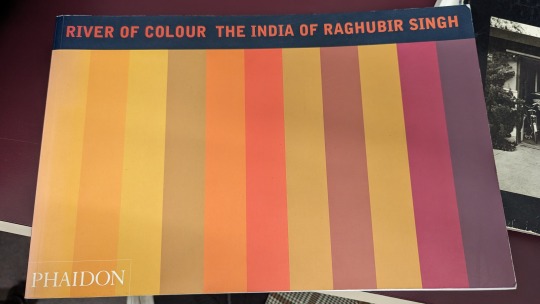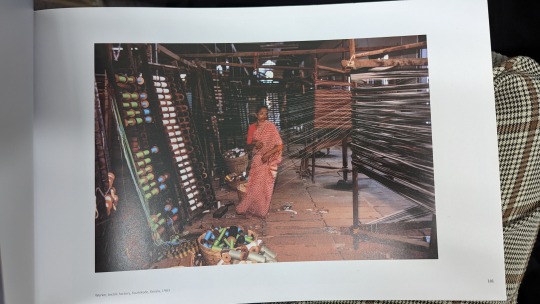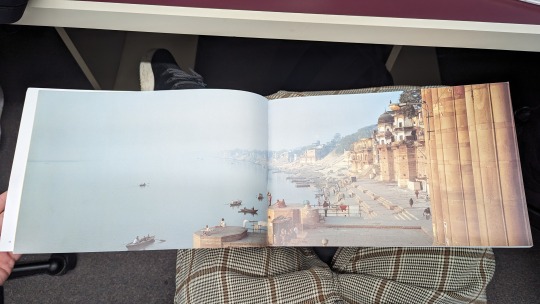Text

Anna-Lou Leibovitz is an American Portrait Photographer. She is also responsible for taking many famous people's portraits. Her portraits are qutie dramatic and I am a big fan of her colors. She was also the first female to have a solo exhibition in the National Portrait Gallery in Washington, D.C. Her work can be quite interesting as she likes to play around human forms and expression.

ANNIE LEIBOVITZ - John Lennon and Yoko Ono, The Dakota, New York, December 8, 1980
This is one of Annie Leibovitz's most famous work. It is a picture of John Lennon and Yoko Ono. The overall image I find to be not really inspiring in composition. I do find the idea of John Lennon latched on to Yoko Ono kinda shows their relationship. Lennon looks quite on the wild side with his naked pose scrunched up. Yoko looks relaxed, but she is still clothes possibly meaning she wears the pants in the relationship. The overall color is this skin color tone and makes the own piece almost naked and bare. The white cloth on the side actually adds a bit of space and honestly helps the image as a whole. The contrast between the two figures is also quite interesting to look at and overall makes this image feel as if I am looking into something personal.
https://www.invaluable.com/blog/10-of-annie-leibovitz-best-known-photos/
https://www.artnet.com/artists/annie-leibovitz/
0 notes
Text

Henri Cartier-Bresson was a French Photographer and a Painter. His camera of choice was the Lecica and had his first exhibition in 1933, Julien Levy Gallery in New York. Continuing his career he won many award including:
1986 Novecento Premio
1981 Grand Prix National de la Photographie
1975 Deutsche Gesellschaft für Photographie
1975 Culture Prize
1964 Overseas Press Club of America Award
1960 Overseas Press Club of America Award
1959 Prix de la Société Française de Photographie
1954 Overseas Press Club of America Award
1953 A.S.M.P. Award
1948 Overseas Press Club of America Award
He was a master of Candid Photography and was one of the pioneer of Street Photography. He was also the author of The Decisive Moment in which I wrote a review on. His passion for his work and his understanding of Photography is quite incredible.

HENRI CARTIER-BRESSON (1908-2004) - Rue Mouffetard, Paris, 1954
Here is one of his works. It is a photograph of a little boy holding what seem to be wine. Whats noticable in this image is that Cartier took this image at an angle. This angle to me almost makes the image more fun and creates movement within the entire piece. Every thing from the kid looking very smug about carrying the glass bottles to the facial expression of the girl in the back, creates this sense of "children" atmosphere and is really fun overall. Though I am not a big fan of the building in the back as I feel that the head of the child blends in to much. It also makes the image feel divided into sections and draws to much attention. The boy's composition is quite nice and is almost symmetrical in form. Overall this image really just reminds me of how fun it is to be a child and I really appreciate that.
https://www.magnumphotos.com/photographer/henri-cartier-bresson/
https://www.invaluable.com/auction-lot/henri-cartier-bresson-1908-2004-rue-mouffetard-pa-96-c-98f40a88ed?objectID=155842564&algIndex=undefined&queryID=42dc1c6ca41ad2e1614d7495e0c179c9
0 notes
Text

Dorothea Lange was an American Photographer who was best known for her works about the Great Depression. She was born on May 26 1895 and passed away in October 11 1965. Her work help document and highlight the effect the Great Depression. Most of her works included shots of people in their everyday life or portraits of people. Her Images brought public attention to the the social and economic issues during that time including poverty and racism.

Dorothea Lange, White Angel breadline, San Francisco, California, 1933.
This photograph particularly is one of my favorites from hers. The simple rhythm of bodies facing away from the view and then the singular man facing toward the viewer really draws my attention in. He looks like he has been thew it all. The sad frown of his expression aswell as the way he holds his hands together, he is really in thought of something. It makes me wonder what he is thinking about during this time. Not only that but the lines created by the fence makes my eyes get pulled in a zigzag way and ends up on the guy aswell. Another thing to note is how the people in the back almost seem to be happy or smiling in contrast to the man. Overall this photo gives me a sense of self-struggle.
1 note
·
View note
Text

This Photo above is titled Epilogue and was taken by Edward Weston in 1919 featuring Margrethe Mather. Edward Weston was a photographer located in California. Edward Weston was also credited to being "one of the masters of 20th-century Photography" His first work was published in 1906 and was focused on "soft focus pictorialism". Soft focus being that he used a lens that blurred out the image a bit and pictorialism in the sense that he made meaning to his images rather than just a straightforward recording. His most notable works were Nude (1925) and Pepper no. 30 (1930). In his work above (Epilogue) it was supposedly was a representation of his new change in style in photography.
In regard to my thoughts on his work above, I honestly find it interesting. The usage of shadows to make the figure, or the literal figure herself in the bottom corner seeming to want to in the shadow. The negative and positive space being used in this photo is great and none of the composition to me feels unbalanced. I find it fascinating to look at the flower pot, which is either two flower points or a single flower pot with two light sources. The name of the photo itself seems to imply that this image was a story after the end. I would also argue that the woman is exiting out of the shadow in order to reveal something new or represent a change. Whatever the case I simply enjoy the look of this piece.
reference:
https://www.holdenluntz.com/artists/edward-weston/
https://emuseum.mfah.org/objects/4318/epilogue
0 notes
Text



Redheaded Peckerwood by Christian Patterson, MACK 2012
The photo book Redheaded Peckerwood is a book designed by Christian Patterson. Christian Patterson is an American Photographer who is known for both his Sound Affects and. Redheaded Peckerwood. He was also awarded a Guggenheim Fellowship and Vevey International Photography Award. His book Redheaded Peckerwood is filled with photos documenting the tragic story of Charles Starkweather and 14 year old Caril Ann Fugate who murdered ten people. The photo is not completely direct in the story telling and leaves a lot to the viewer’s imagination. The book also includes many items which the reader could physically move and interact with, which ultimately engages the view into the story. This book was captivating to say the lease. The unbelievable amount of storytelling and buildup, honestly I was no longer just looking at photos, I was reading a story. I was absolutely investing into this book. The most fascinating point of this book was the indirectness and “open aired” storytelling, but still being all related to the story. I really wish to replicate this storytelling with such photographs. Something that is not direct, but engaging; Something unnerving, but intriguing. This book also does an amazing job when with text photographs, and typography. The images of private notes, receipts, and news articles adds so much to the story and leaves the view wanting more information. The Typography images is done in a way where it is not completely direct, but give just enough caption for the view to guess the rest. It is also very uncomfortable how fun and comedic the typography is and because of the story creates and adds to the atmosphere. Overall this book was really fascinating and amazing. Even with its tragic story it was really well captured.
0 notes
Text


Suburbia by Bill Owens, Straight Arrow Books, 1973
The book Suburbia by Bill Owens is a monochromatic photo book published by Straight Arrow Press in 1972. Bill Owens is an American photographer living in Hayward California. He was born on September 25, 1938 and is currently 85 years old. His book Suburbia was one of his most successful books and was included in Andrew Roth’s The Books of 101 Books:Seminal Photographic Books of the Twentieth Century. His book was a collection of quotes from people and a snapshot into their lives. Many of the pictures were just the mundane everyday life of people living in the suburban area. His images captured perfectly the different lifestyles of people each with their own unique way of life. One of his image included a picture of a son and his dad raking up leaves on the lawn. The quote next to it said, “My dad thinks it’s a good idea to take all the leaves off the tree and rake up the yard. I think he’s crazy.”. I found this image and quote to be very funny and relatable even if it is a dated image. It reminds me of the times my dad has told me to do unreasonable things. The image makes me nostalgic and honestly just makes me feel happy. I find Bill Owens’ book to be very relatable and honestly the quality of the images makes me forget that it was an image but more of a story. Each image tells their story so well that I kind of get lost into the story telling. I really like the way Bill Owens’ included quotes next to his images. The quotes really help the image come to life and give better insight into the image itself. I want to be able to replicate this as I want to become a manga artist, it is only natural to include both an image and text to tell a story. Although these are two different mediums I believe I could apply the same techniques in order to create better storytelling. Also, I’d like to note how Owens’ decided to tell the story without color. Colors in my idea would bring the image back alive, but without the colors the image feels frozen in time. Color is an important story teller, and monochromatic colors in Bill Owens’ book freezes the image which I think worked really well in this case. I think Bill Owens’ storytelling is amazing and something I would like to replicate in my work (not just photography ).
0 notes
Text



Rivers of Colour the India of Raghubir Singh, Raghubir Singh, Phaidon Press, 2006
The book River of Colour the India of Raghubir Singh is a book by Raghubir Singh published by Phaidon Press in 2006. Raghubir Singh was born in 1942 in Jaipur, India. He was well known for his landscapes and documentary style photos. He was one of the pioneers for color photography on the streets and published and documented his 30 years of travels. Unfortunately he passed away in 1999 but left a huge impact on the photography scene. In his book he photographed the landscapes of India, the people, and the overall life in India. The book starts with very rural areas in India and slowly goes to the modern life of India. It is almost a timelapse of india as some pictures include very ancient buildings and traditional life, then moving on to very western and clean housing and modern clothing. One of the images that caught my eye was his two page spread landscape of a huge river. The contrast of the soft light blue and the orange earth color buildings as well as the wide angle creates an amazing spacious composition. The image looks extremely vast with the one-point perspective and disappearing landscape into the horizon line makes the image pulls you into the scene. I really like Raghubir Singh’s work. His landscapes are interesting and different from the common idea of landscapes. His colors are amazing and his compositions are beautiful. To add to that he was also able to portray his whole idea of the colors of India in his book. I want to take such vast pictures like Singh was able to create. Images that are its own world. They pull you in and set you in a scene. It is very inspiration work that I really appreciate.
0 notes
Text
Photography Proposal:
In this world the idea of time is a concept we all abide by. Time in itself is the essence of which we define life and death. Yet in modern day it seems that we are able to stop time itself if only just for a moment and that is through the means of photography. The emotion and feeling we get when we can understand time from an image is a unique experience to those who understand its meaning. Furthermore, the idea of “Memento mori” or the reminder of death is a concept which I wish to capture through photographs.
In order to achieve this “idea” I propose to capture images of old run down objects or items. Imagine a rusted piece of machinery, used and forgotten, or an abandoned home where the essence of human existence still lies there, yet there are no humans. I wish to explore the very concept of the reminder of death. Not just the human concept, but the concept of an end to everything, anything and everything. Images with a sense of melancholy or loneliness.
To take these pictures I will first have to walk around and find places or recommendations to places I could take pictures in. Specifically places where one might abandon things or places without many people. Luckily there is also a train track and canal near by where I live which can be easily accessed. I may also go to the junkyard and take pictures there. The overall objective is to take pictures of old worn down objects or places which seemed abandoned.
Through this concept I am hoping to enlighten people of the beauty of time, the idea of “memento mori”.
0 notes
Text
0 notes
Text
Elements and Prinicles of Design:
Line: A group of points connected.
Texture: the sense of touch in what you are looking at.
Value: Tints and Shades to create darker of lighter image
Shape: An outline of an object, can be organic or inorganic.
Color:a combination of value, chroma, intensity, and hue
Form: created by shapes and value
Space: the Negative or positive. The perspective between objects
Balance: the distribution of visual weight in a design
Movement: The visual flow and direction in a composition
Contrast: Different quality that makes elements stand out
Hierarchy: The importants of each elements.
Repitition: repeating elements
Propotion: The size in comparision to another element
Unity: The overall sense and relationship of the elements
Harmony: The feeling of unity and completeness in a design
Variety: combination of elements to create diversity.
0 notes
Text
Thoughts on Cartier's Essay
Henri Cartier Bresson Decisive Moment
Henri Cartier’s description and views of the photograph is pretty interesting and to say the least more relatable than anything else. In his writing, we can really note the timeline which he was in. First and foremost we can see just how far the camera equipment has grown from the time he recorded his thoughts. He, in his writings, tries to predict the outcome of color in photography but ultimately is unsure. Nowadays we see color photography everywhere and are more than loved by photographers. The new wave of technology able to capture color to its accurate light wave is quite incredible and one which Henri Cartier might have never predicted to happen so fast. To add to this he worries about having a composition grid just placed on camera and here nowadays it is a function included in almost every camera.
Most of Henri Cartier’s thoughts are generally not teachings but rather him explaining his experience with photography. The most important thing to take away from his writing is to just explore photography. He explains in broad ideas what composition does to your photography and explains how there are always new discoveries of techniques. Experience and the act of living and observing seems to be Cartier’s most important factor when it comes to photography and I honestly agree. Not just photography but any art in general comes from experience and understanding the world you live in and the world that surrounds you.
I do find his thoughts regarding customers to be the most fascinating. He explains just how much customers can control your outcome and work. He emphasizes the risk of being molded by the customers rather than you creating works which come from you. This fact I can see clearly as I am a graphic designer. Most of my designs and ideas stem off of the customer’s wants and needs. As much as I would love to just take the wheels, unfortunately it is not possible when designing from someone else.
Overall this was a great read. I find Cartier’s love for photography to somewhat rub off on me. I enjoy being engrossed in my art and to see someone write in a way where he explains his thoughts with such passion is quite refreshing to see.
0 notes
Text

The rest of the chocolate. We tried to be fancy and drizzle some white chocolate on top lol.
0 notes
Text

My sister's BF helping us put the chocolate into the molds.
0 notes
Text

This time we bought the right chocolate and just decided to microwave it in short bursts. It worked so much better.
0 notes
